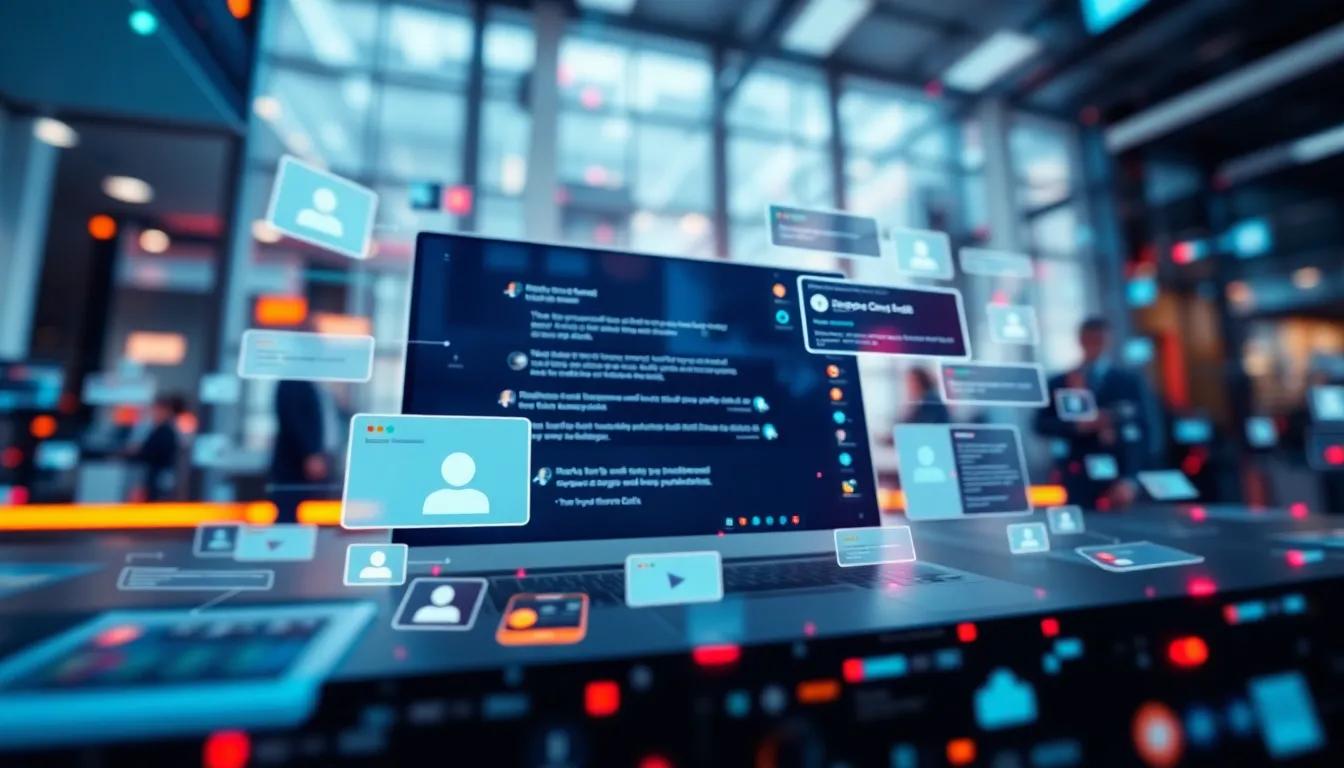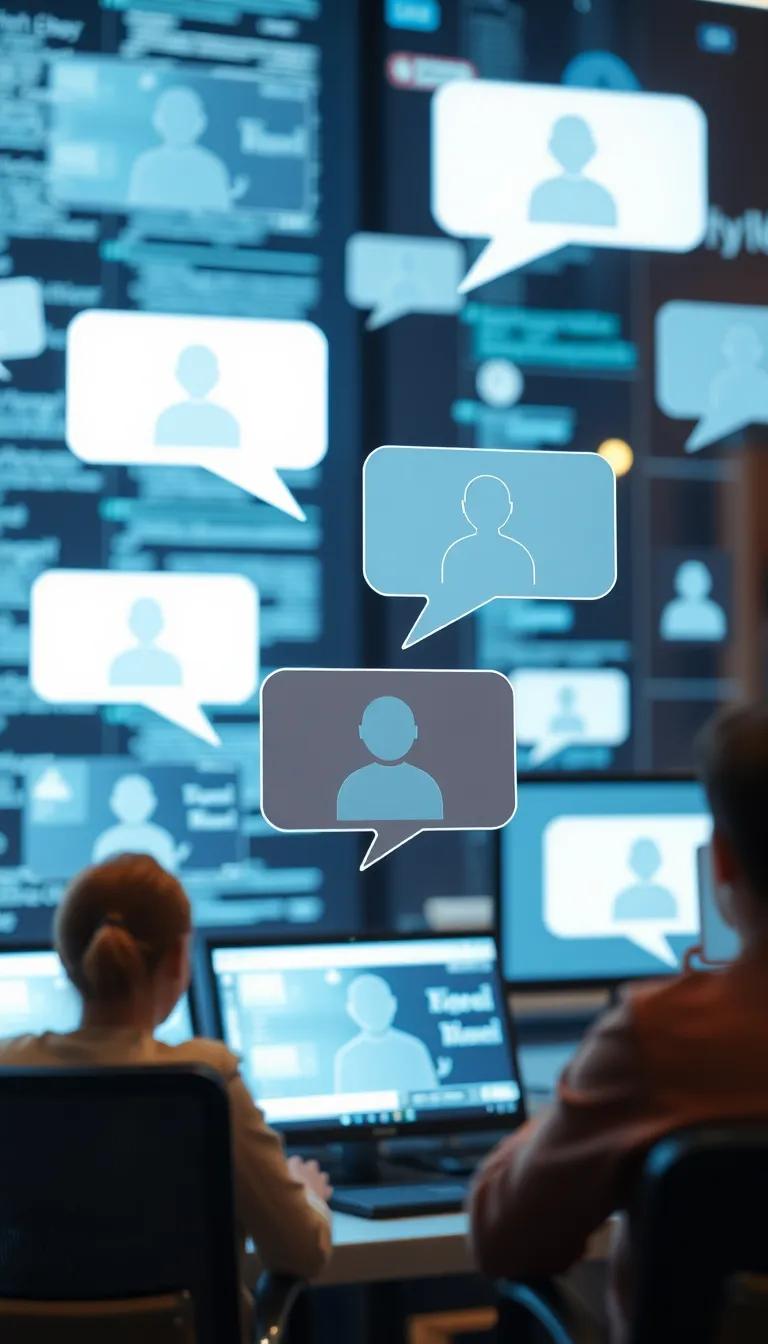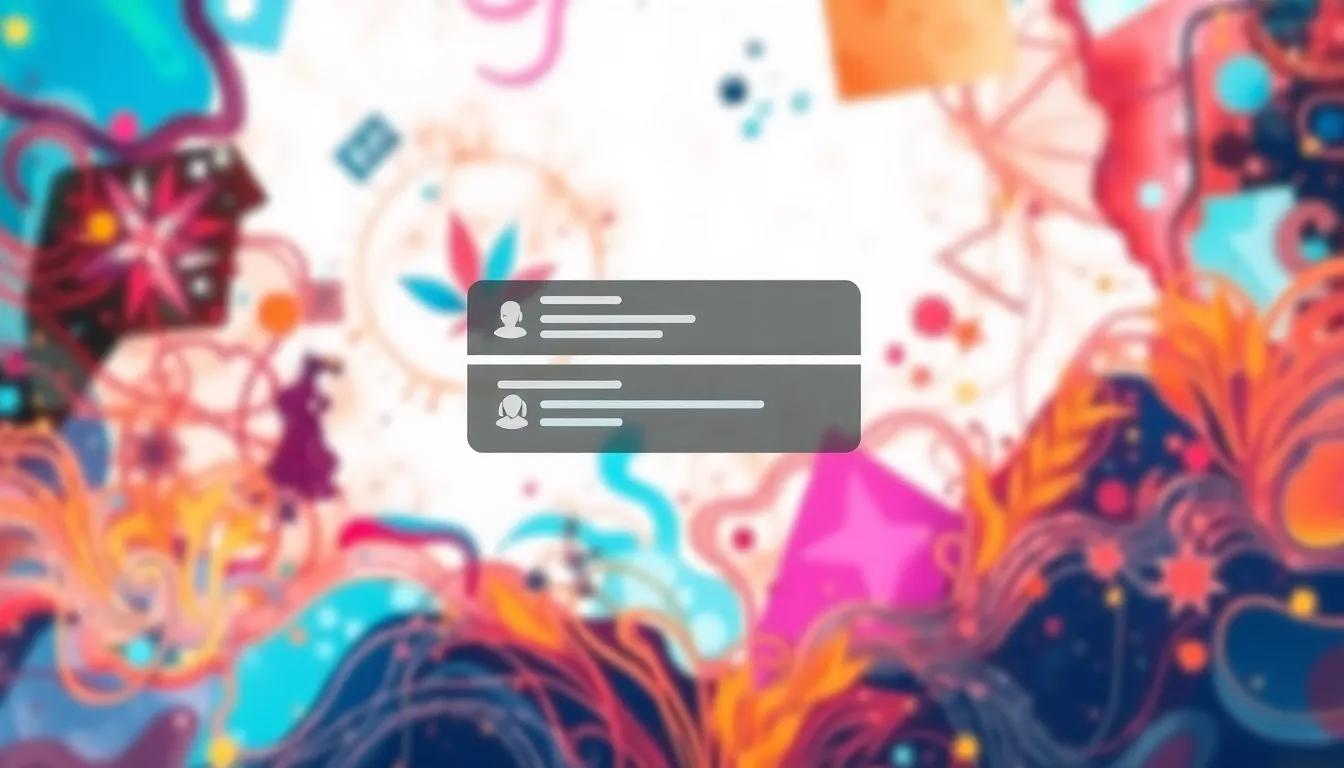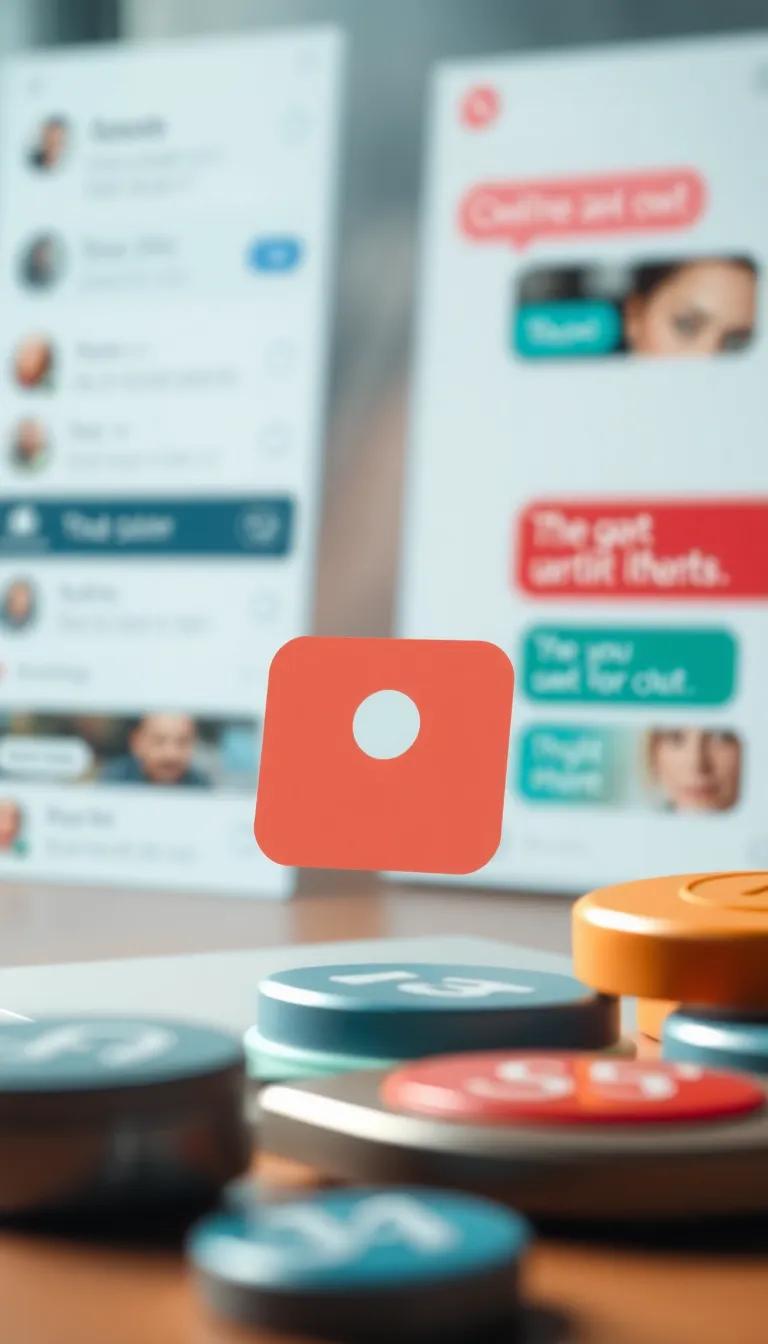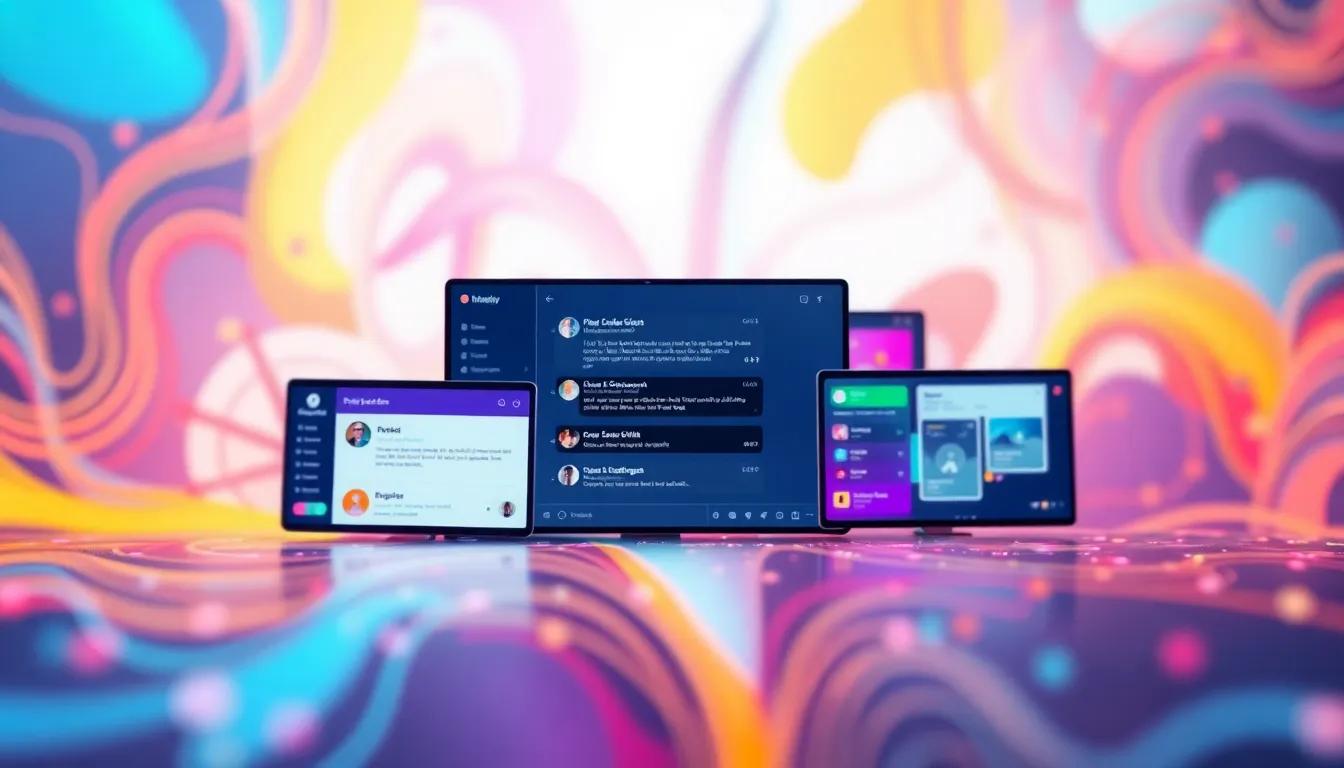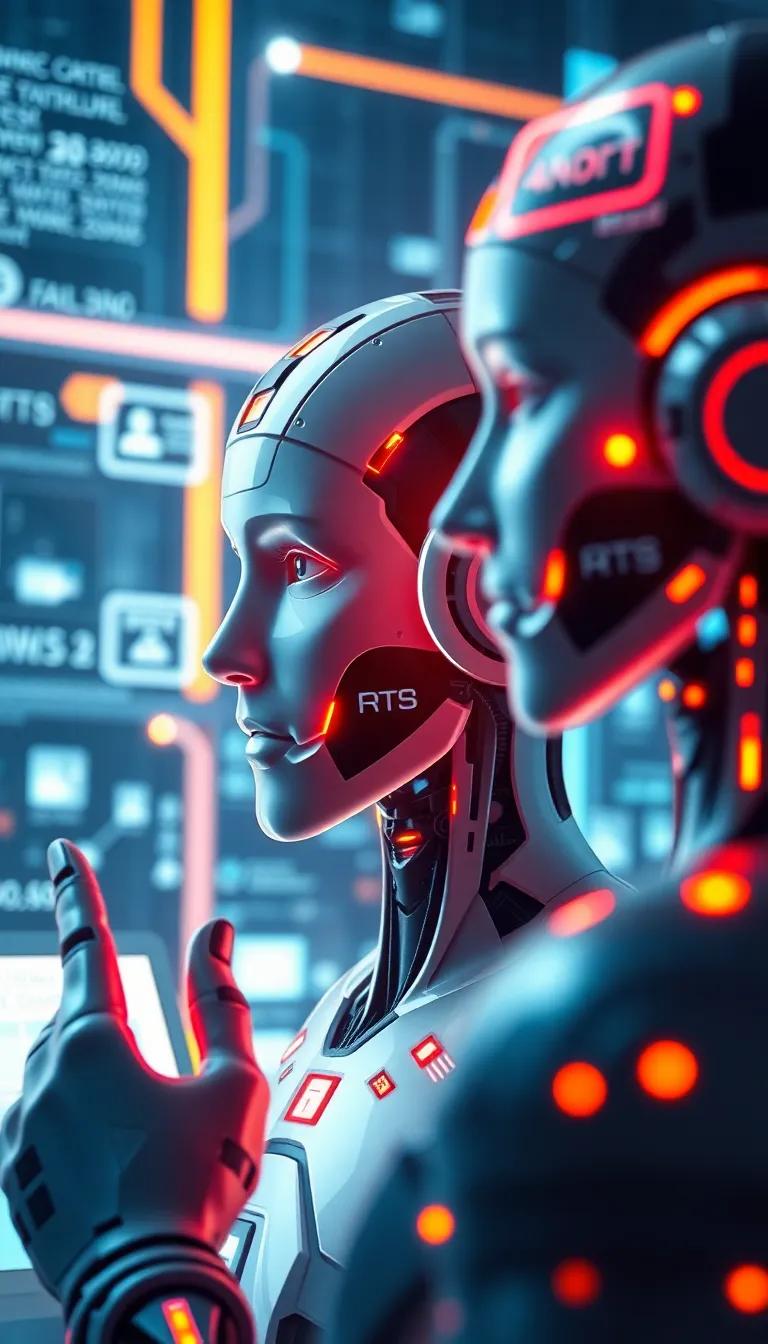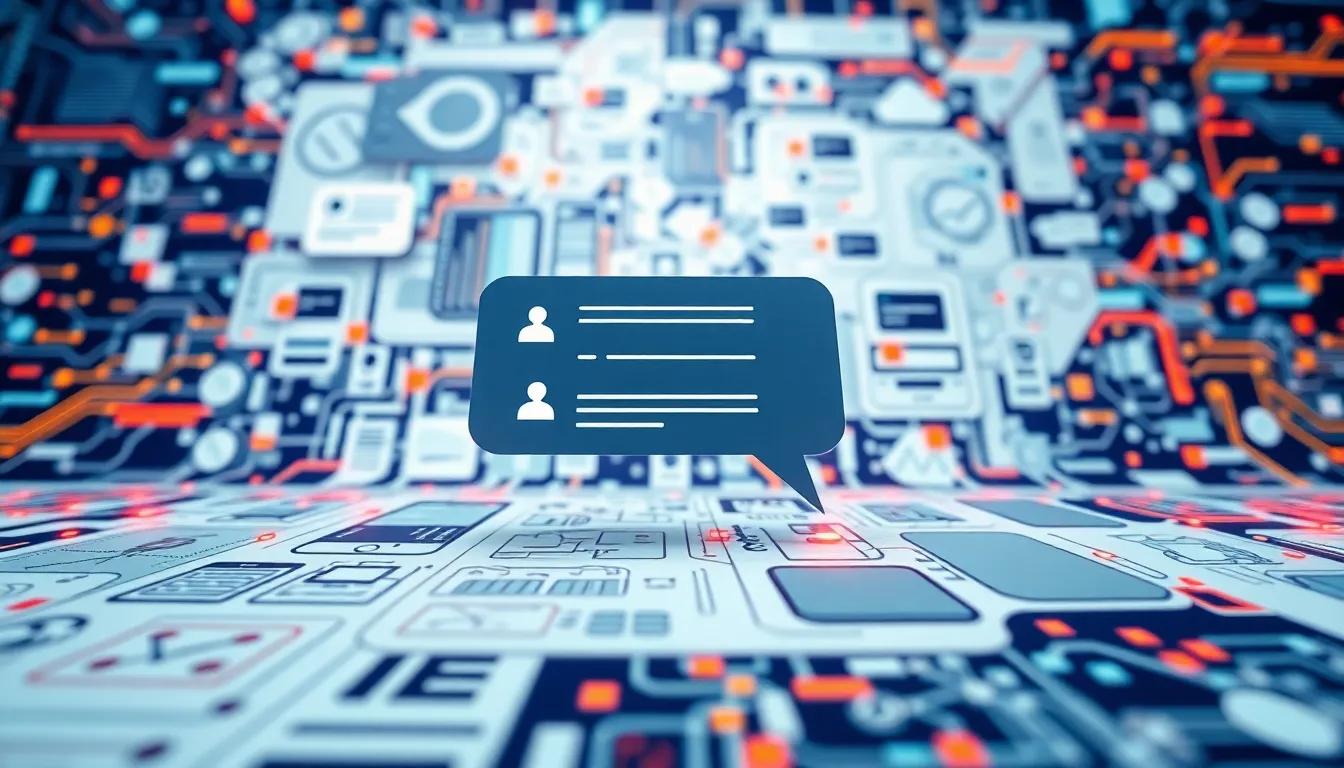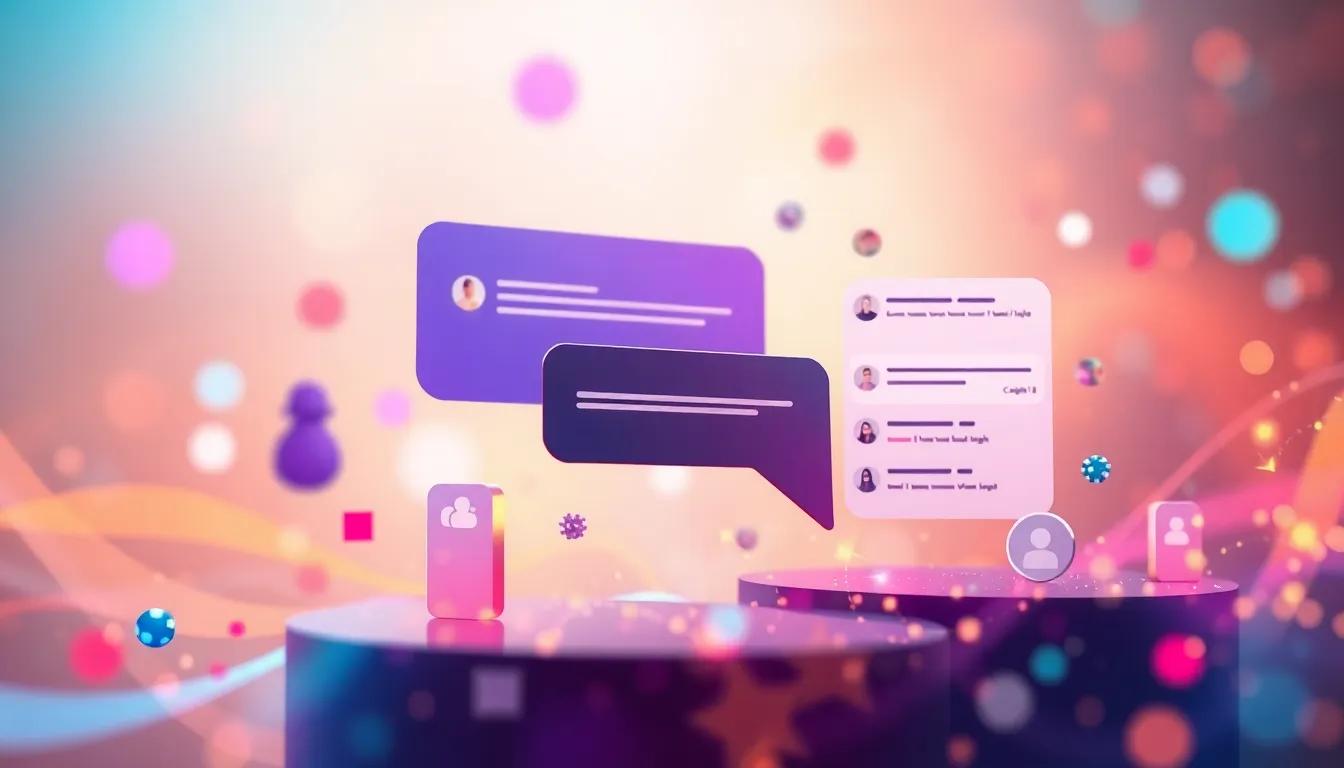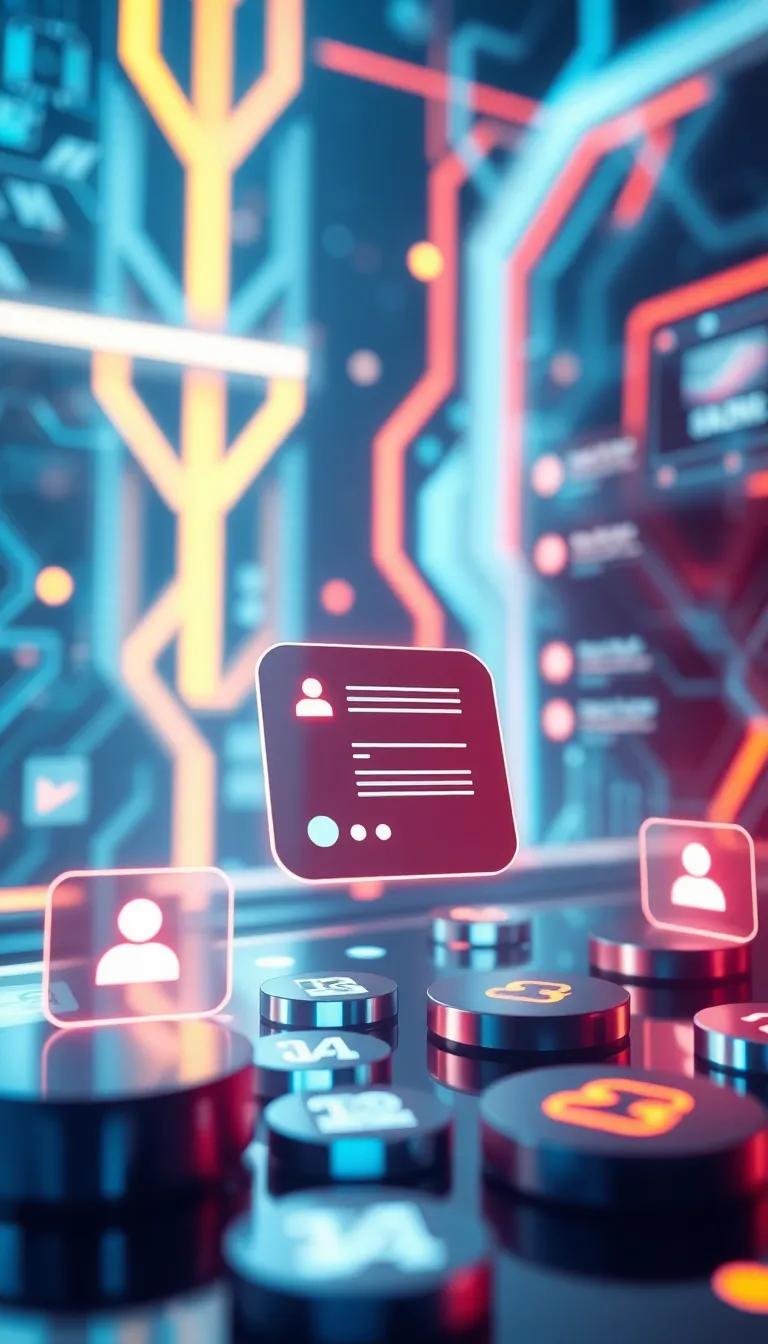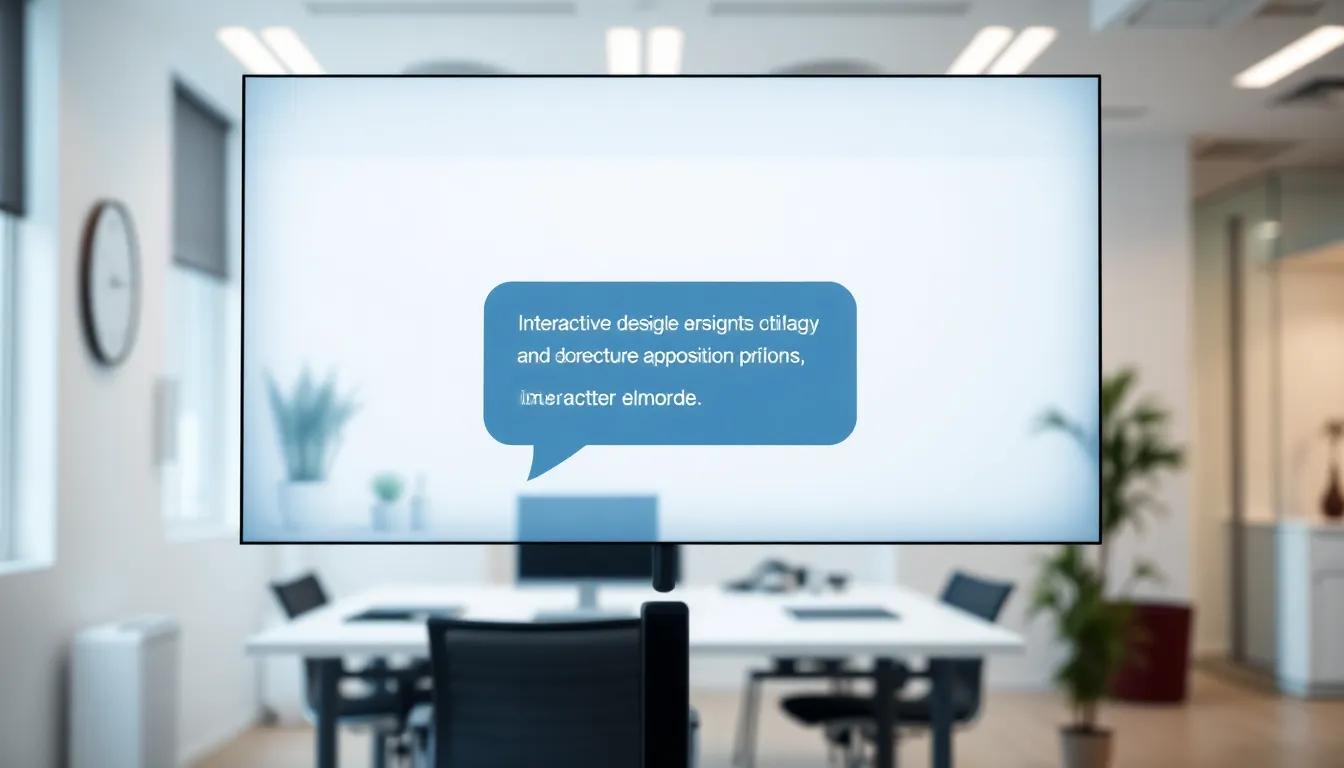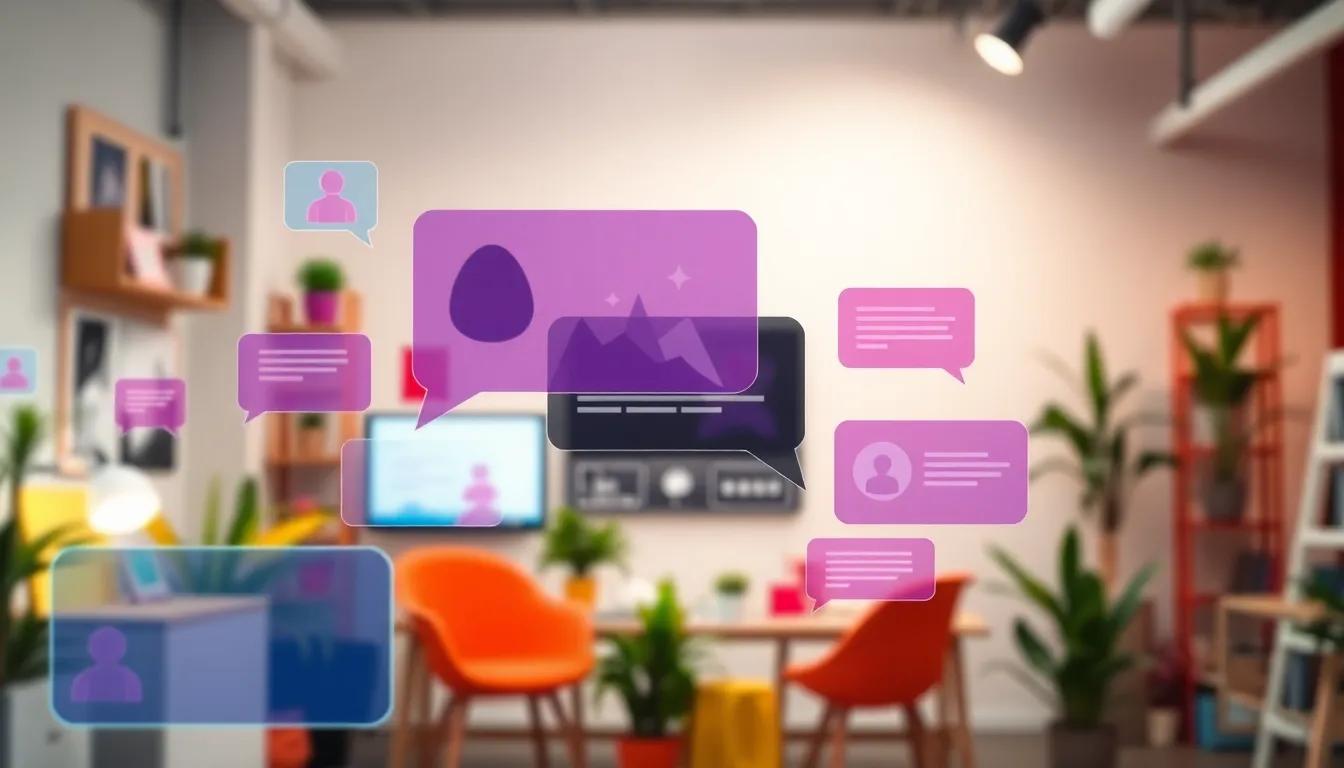Introduction
In today’s fast-paced digital environment, engaging users through an effective website chat design is crucial for boosting customer satisfaction and conversion rates. This article delves into the fundamental aspects of website chat design, exploring how elements like user interface (UI) and user experience (UX) intertwine to create a seamless communication channel. Furthermore, it will provide practical insights on modern designs and strategies that businesses can implement to enhance their customer interactions.
We will examine the evolution of chat design, starting from its early stages to its current shift towards personalization and automation. As organizations strive to improve their customer service capabilities, the insights derived from analyzing consumer behaviors alongside technological advancements become paramount. Readers will discover actionable tips for creating an interactive and user-centric chat experience that resonates with their target audience.
Understanding Website Chat Importance Enhancing User Engagement and Satisfaction
Effective website chat systems have emerged as a pivotal tool in boosting user engagement and satisfaction. Website chat serves as a direct line of communication between businesses and their customers, offering immediate support and information. This immediacy not only enhances the user experience but also influences user behavior positively, often leading to increased conversions.
The significance of a well-integrated chat feature cannot be overstated. Users often prefer instant communication channels over traditional methods such as email or phone calls. A well-designed chat system can promptly address customer inquiries, troubleshoot issues, or provide recommendations tailored to the user’s needs. This responsiveness fosters a sense of trust and reliability, encouraging users to linger longer on the site, explore more products or services, and ultimately make purchase decisions.
Website chat systems can also drive conversions by capturing leads more effectively. For instance, when a user expresses interest in a product but hesitates to complete the purchase, a proactive chat invitation can provide the necessary nudge. Offering personalized assistance in real-time not only reduces cart abandonment rates but also transforms a potential sale into a completed transaction. Additionally, chat features can gather valuable data about customer preferences and pain points, further refining marketing strategies and enhancing overall service offerings.
Another critical aspect of website chat importance is its role in fostering user loyalty. An engaging chat experience that feels personal tends to create a bond between the brand and the user. When customers experience positive interactions, they are more likely to return to the site, recommend it to others, and become long-term advocates for the brand.
To effectively implement a chat system that achieves these benefits, it’s vital to consider the user interface and experience. A streamlined, user-friendly design that complements the overall aesthetics of the website can make the chat feature inviting. By integrating chat strategically within the user journey, businesses can significantly impact user satisfaction and, consequently, conversion rates. In essence, understanding the importance of website chat systems is foundational in creating meaningful interactions and driving business growth.
Key Elements of Effective Chat Design Unlocking User Engagement
User Interface: The Gateway to Engagement
A well-designed user interface (UI) is fundamental to effective chat systems. A clean and intuitive UI can significantly enhance user experience, encouraging visitors to engage with the chat feature rather than dismiss it. Key elements of a strong chat UI include simple layouts, easy navigation, and visually appealing design elements. A chat window that allows for quick access to previous conversations or FAQs can improve the effectiveness of customer interactions, making users feel supported and valued.
Incorporating an easily recognizable chat icon that contrasts with the background helps draw attention to the feature without overwhelming the user. This balance is vital; users should notice the chat option, but it shouldn’t dominate their screen. The chat interface should also be customizable, allowing businesses to align colors, fonts, and overall aesthetics with their brand identity. This creates a cohesive experience that fosters trust and recognition.
Accessibility: Inclusive Communication
Effective chat design must prioritize accessibility, ensuring that all users can interact comfortably regardless of their abilities. Designing chat interfaces that are screen-reader compatible, feature keyboard navigation, and use high-contrast color schemes can significantly widen the potential user base. Implementing options for different languages and accommodating users with various levels of digital literacy enhance usability.
Another crucial element is providing options for users to toggle between chat and other forms of communication, such as email or phone support. This empowers users to choose methods that suit them best, fostering a sense of control over their support experience. Accessibility shouldn’t be an afterthought; rather, it should be integral from the initial design phase.
Ease of Use: Streamlined Interactions
Ease of use is vital for reducing friction in user interactions. A chat system should operate seamlessly across devices, be it desktop or mobile. The design must ensure that the chat process is straightforward—from initiating a conversation to receiving responses. Users should be able to engage with the chat feature with minimal clicks, and responses should be timely and contextually relevant to enhance user satisfaction.
Incorporating features like predefined quick responses or buttons for common inquiries can streamline the interaction process. Such elements not only speed up communication but also provide a more guided experience, allowing users to feel more confident and engaged as they navigate through their queries.
Incorporating Automation and AI in Chat Solutions
Enhancing User Interactions with AI
The integration of automation and artificial intelligence (AI) has fundamentally transformed website chat design, paving the way for richer and more personalized user interactions. By employing AI-driven chat solutions, companies can offer users immediate responses, thereby enhancing engagement and minimizing frustration. This instantaneous communication creates an environment where users feel valued and understood, ultimately leading to higher satisfaction rates.
One of the standout features of AI in chat systems is its ability to process vast amounts of data, learning from past interactions to improve future responses. This capability allows businesses to tailor conversations according to individual user preferences and behaviors. For instance, when a user visits a site, AI can recognize returning visitors and preemptively gather context from previous conversations. This feature not only boosts efficiency but also fosters a personalized experience, as customers encounter tailored responses that address their unique needs.
Personalization through Automation
Another significant advantage of integrating automation within chat solutions lies in the personalization aspect. Automated chat systems can segment users based on factors such as demographics, browsing history, and purchase behavior. This segmentation enables the chatbots to present relevant suggestions and offers, enhancing the overall user experience. For example, if a user frequently browses specific product categories, AI can proactively initiate conversations that highlight related items or recommend features that they have shown interest in previously.
The adaptability of AI-powered chatbots also extends to understanding user intent. By leveraging natural language processing (NLP), chatbots can interpret user queries more effectively, differentiating between various requests and responding appropriately. Such capabilities enable smooth conversations that mirror human interactions, making users feel more at ease during their engagement with the chat interface.
As businesses strive to optimize their chat solutions, incorporating automation and AI not only streamlines operations but also cultivates a meaningful connection with users. These elements play a pivotal role in modern website chat design, creating a compelling environment that resonates with users and enhances their overall experience. The benefits of automation and AI ultimately contribute to a website’s success, reflecting the necessity for businesses to evolve alongside technological advancements.
Responsive Chat Design for Optimal User Experience
Enhancing User Satisfaction with Adaptable Interfaces
In the diverse array of modern devices and screen sizes, responsive chat design emerges as a critical component of effective website communication. As users increasingly engage with websites through smartphones, tablets, and desktops, the ability of a chat interface to adapt seamlessly to any screen size can significantly impact user satisfaction. The essence of responsive design lies in its flexibility, allowing chat elements to rearrange, resize, and transform based on the device used, creating a cohesive experience that prioritizes user interaction.
A responsive chat window should dynamically adjust not only in its visual layout but also in its functionality. Features such as input fields, buttons, and avatars need to be optimized for touch interfaces on mobile devices, ensuring that users can easily engage without frustration. For instance, larger buttons and proper spacing are essential for mobile users, reducing the likelihood of errors while navigating the chat. By taking these aspects into account, designers can create an environment that encourages users to interact more freely, translating into longer engagement times and higher chances of conversion.
Beyond mere aesthetics, responsive chat design can enhance user power by promoting accessibility. Users with different abilities should also be considered in chat design; features such as keyboard navigation and screen reader compatibility can make the experience more inclusive. Ensuring that chat solutions meet accessibility standards not only benefits users with disabilities but also aligns with modern web design principles that emphasize inclusivity and user-centric design.
Responsive design facilitates real-time updates across various devices, ensuring that users receive consistent information and support, regardless of how they access the chat. This continuity of experience is vital, especially when dealing with customer inquiries that may span multiple sessions or devices. A user who starts a conversation on their smartphone should be able to continue it later on their laptop without losing context.
Integrating responsive design in website chat enhances the overall user experience. It fosters greater user satisfaction, encourages consistent interaction, and lays down the foundation for deeper engagement, making users more likely to convert into loyal customers. As the landscape of web browsing continues to evolve, prioritizing responsive chat design will be essential for any organization striving to maintain relevance in their digital communications.
Measuring Success Metrics and Analytics in Modern Website Chat Design
User Engagement Rates
Quantifying the performance of a website’s chat feature begins with measuring user engagement rates. This metric reflects how effectively the chat is capturing user attention and fostering interactions. Engagement can be evaluated through various methods, such as tracking the number of initiated chats, the duration of conversations, and the frequency of returning users. A high engagement rate illustrates that users find the chat function compelling enough to interact with regularly.
Understanding the circumstances that lead to increased engagement can be pivotal. For instance, analyzing the timing of chat initiations can reveal peak interaction periods, which can help in optimizing staffing or automating responses. An understanding of engagement patterns is essential for fine-tuning the chat experience and, in turn, enhancing user satisfaction.
Resolution Times
Resolution times indicate the efficiency of the chat interface in addressing user inquiries. Tracking how long it takes to resolve issues provides invaluable insights into the chat’s effectiveness. Quick resolution times often correlate with higher levels of customer satisfaction, as users appreciate prompt responses to their queries. This metric can also highlight areas where the chat design may be falling short, such as insufficient automated responses for commonly asked questions or delays caused by complex issue escalations.
Implementing systems to minimize resolution times can offer significant advantages. This may include refining knowledge bases, integrating AI-driven chatbots for initial queries, or ensuring that live agents are adequately trained to handle diverse topics quickly and effectively. By doing so, companies are better prepared to meet user needs in a timely manner.
Customer Satisfaction Tracking
Customer satisfaction (CSAT) surveys provide an essential feedback loop for evaluating the success of chat interactions. After a chat session concludes, clients can be invited to rate their experience, contributing invaluable data for assessing the chat’s impact. High satisfaction levels can indicate that the chat is functioning well, while lower ratings might expose flaws within the chat experience, whether due to design, response accuracy, or agent training.
Incorporating survey results with other metrics, like engagement rates and resolution times, allows for a holistic view of chat effectiveness. By continuously examining these analytics, businesses can develop strategies for enhancement, keeping in line with evolving user expectations and technological advancements in chat design.
Future Trends in Website Chat Design Explore Emerging Trends in Modern User Chat Design
Meeting User Expectations Through Innovative Technology
As we look ahead in website chat design, the landscape is evolving dramatically, driven by technological advancements and shifting user expectations. This transformation emphasizes the need for chat interfaces that not only respond effectively but also anticipate user needs. One of the most significant trends shaping the future of chat interactions is the integration of artificial intelligence (AI). AI-driven chatbots are increasingly sophisticated, utilizing natural language processing to provide more human-like responses, thus enhancing user experiences.
Chat design must adapt to support this AI evolution, leading to interfaces that feel intuitive and personalized. These interfaces can track user interactions and preferences, offering tailored suggestions that align with individual user journeys. The focus on personalization will become a critical factor in keeping users engaged and satisfied, as they come to expect chat solutions that remember prior interactions and respond accordingly.
Visual and Functional Innovations
Another trend gaining traction is the incorporation of rich media elements within chat interactions. Engaging users through images, videos, and even interactive elements can create a more dynamic conversation flow. This shift moves away from text-heavy communication, enabling brands to share product information, tutorials, or promotional content more effectively. Chat design will increasingly utilize visual storytelling to capture user attention and convey messages succinctly.
Multi-channel communication has become essential. Users expect to shift seamlessly between platforms—such as mobile apps, websites, and social media—without losing the context of their conversations. This demand calls for chat solutions that can integrate seamlessly across multiple environments while maintaining a coherent user experience. The future of website chat design will prioritize interoperability, ensuring that conversations can continue without interruption, regardless of the user’s chosen platform.
Data privacy and security are also paramount in the realm of chat design. With growing concerns over data leaks and privacy violations, users are becoming more selective about the platforms they engage with. Future chat designs will need robust security protocols that protect user data while creating a sense of trust. Transparency regarding data usage and adherence to regulations will be key in building that trust.
As technology advances and user expectations evolve, website chat design must be proactive. Embracing AI, rich media, multi-channel capabilities, and stringent security measures will be essential in crafting compelling chat experiences that resonate with users. Meeting these demands will define the voice of modern chat interactions.
Conclusions
Mastering website chat design is a multifaceted endeavor that combines knowledge of interface principles, user needs, and cutting-edge technology. By focusing on these elements, businesses not only enhance their user experience but also establish a loyal customer base. This article has covered the secrets to effective chat design, underscoring its importance in a competitive online landscape.
A compelling user chat can significantly influence customer satisfaction and drive conversions. As the digital space continues to evolve, staying updated on the latest trends and techniques in chat design will be essential in maintaining a relevant and competitive edge in the market.

